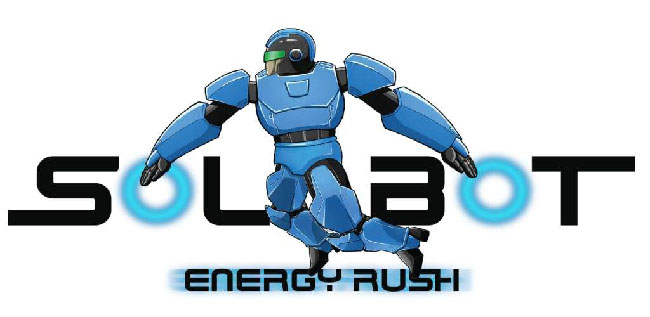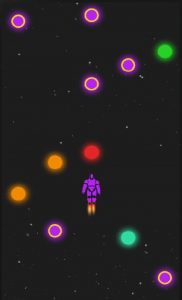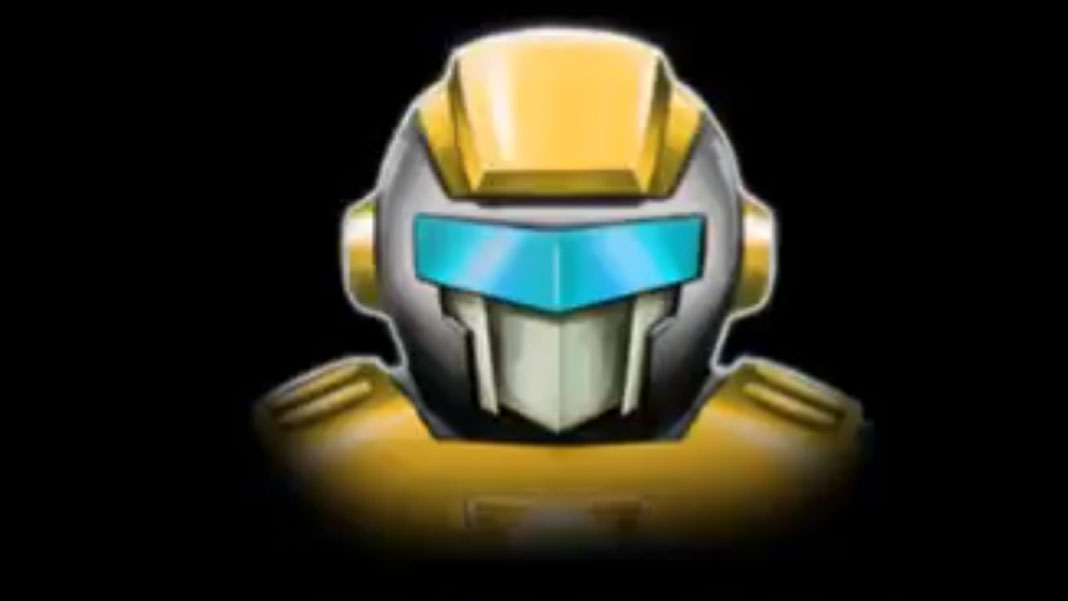Robots changing their color like super effective chameleons can be found flying through space in the casual mobile game Solbot Energy Rush. Developed by Freakout Games, Solbot Energy Rush is a game with simple one-touch controls, following a robot that changes color based on the orbs they collect, while evading everything else that will destroy them. Power-up items like blasters, a shield, and a magnet help the robot push forward as the dangers of space multiply.

Recognition Abroad
Though Solbot Energy Rush was recently accepted into the Indie Prize Showcase at Casual Connect Asia 2018, Freakout Games had to decline when it became apparent the event’s schedule conflicted with a future investor meeting the team was set to attend.

Freakout Games’ “Official Indie Prize Finalist” sticker from the Casual Connect Asia 2018 Indie Prize Showcase.
Vijesh Viswambaran, Freakout Games’ founder, programmer, and designer, explained in an email that though the team had submitted the game for consideration, it was still “a big surprise” to receive official acceptance.
Robots for Sustainability
On top of simple gameplay in a colorful space setting, Solbot Energy Rush also has an unobtrusive environmental message.
Viswambaran said that Solbot Energy Rush incorporated educational elements, but it did not force that on players.

Environmental facts are available through the menu. These are separate from the game’s main campaign which focuses on collection and evasion.
“Since climate change is a huge factor in the present world, we thought to provide some awareness about energy sustainability,” Viswambaran said. “So we depicted collectible orbs as ‘renewable energy,’ and the name ‘Solbot’ was inspired by using two words; ‘Solar’ plus ‘Robot’ equals ‘Solbot.’”
A robot wasn’t immediately the main and titular character for the game. While the gameplay mechanics were quickly established, the idea for a robotic protagonist came later on in development.
“We wanted to answer questions such as, ‘Why are they collecting these orbs? What are the orbs being used for?’” Viswambaran shared.

The robot can only touch the orbs they can collect, which always have a glowing yellowish ring around them. They must dodge the other objects, which will make them explode on contact.
He said that a few ideas came up: a theme about robots and the future; a theme about birds and fruits; and a theme about hummingbirds, bees, butterflies, and gardens.
“With the robot/future theme, we thought it would be a good fit, as young audiences are more influenced by robots,” Viswambaran said.
For inspiration on character design, the game’s website reports that the team looked to another robotic game character, Capcom’s Mega Man.
Creating and Releasing Something with Color
According to the game’s website, Solbot Energy Rush was inspired by a game jam theme.
“Various game jams inspired us to keep things simple without complicating the design,” Viswambaran said.
The goals was to take the simple design and carefully balance it with enough challenge to keep players engaged.
“After a couple of prototypes, we felt that a color changing aspect fit perfectly into this scenario,” Viswambaran said.

The robot’s color will change based on the color of the orb they collect.
Solbot Energy Rush has the slight feel of an endless runner in spirit, with gameplay largely revolving around the player navigating a robot who’s constantly flying through space while dodging threats and picking up orbs. Unsurprisingly, this was how the project got its start.
“It started off as an endless runner type of game,” Viswambaran said. “But later on we modified it into a level-based game, so that it gives a sense of progression to the players.”
According to Viswambaran, various playtesting sessions for Solbot Energy Rush were held, with random participants from both gaming and non-gaming areas. Positive feedback and results encouraged the team to continue planning and designing the game.
On the game’s website, Viswambaran said that though it was challenging to find like-minded people while working remotely, releasing and sharing the game has been exciting.
One of the prototypes used to make the game.



